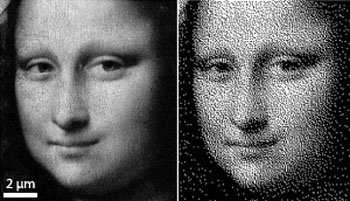| Sep 26, 2011 |
Producing 3D polymer structures from 2D patterns
|
|
(Nanowerk News) The fabrication of three-dimensional (3D) polymer structures with controlled composition, physical properties and morphology is important for a number of applications. In tissue engineering, for example, 3D polymer scaffolds are used to grow new tissue, while in stem cell research, there is much interest in how the physical properties and morphology of a polymer support can affect cell differentiation. The formation of 3D structures has so far been performed using top-down processes in which a block of polymer is slowly etched away using a series of patterned resists. Such processes can be used to produce complex 3D structures, but require specific compatible polymers, limiting the range of physical properties that can be achieved.
|
|
Zijian Zheng and co-workers from Hong Kong Polytechnic University have now reported ("Fabrication of Arbitrary Three-Dimensional Polymer Structures by Rational Control of the Spacing between Nanobrushes") the formation of 3D nanostructures using a bottom-up approach that involves controlling the two-dimensional (2D) spacing of polymer brushes on a surface.
|
 |
| A 2D grayscale image of the Mona Lisa (left) is converted into a 3D pattern (right). (© 2011 Wiley-VCH)
|
|
"We grow brush polymers from a 2D pattern of initiator molecules printed on a surface using a technique called dip-pen nanodisplacement lithography," explains Zheng.
|
|
Two-dimensional nanostructures can be readily prepared by a number of nanofabrication techniques. The bottom-up growth of 3D nanostructures, however, requires some finesse. By arranging a pattern of initiator molecules on a 2D surface using their nanolithography technique, Zheng and his colleagues were able to grow 3D nanostructures with the desired shape.
|
|
"We made patterns of initiator molecules with spacings of between 25 and 1,000 nm," says Zheng. "Polymer brushes grow from this patterned template, converting the 2D image into a 3D structure through interactions between neighboring brushes."
|
|
When the initiator molecules are spaced further apart, the polymer brushes that grow from them collapse and spread out on the surface. In contrast, when the initiator molecules are packed tightly, the polymer brushes tend to grow perpendicular to the surface, providing control over the 3D structure.
|
|
Zheng and his co-workers demonstrated their bottom-up fabrication technique by converting a grayscale image into 3D topographical map of black intensity (see image). Lighter areas in the original image were converted into 'hills' and the dark areas into 'valleys' by varying the packing density of patterned initiator molecules.
|

